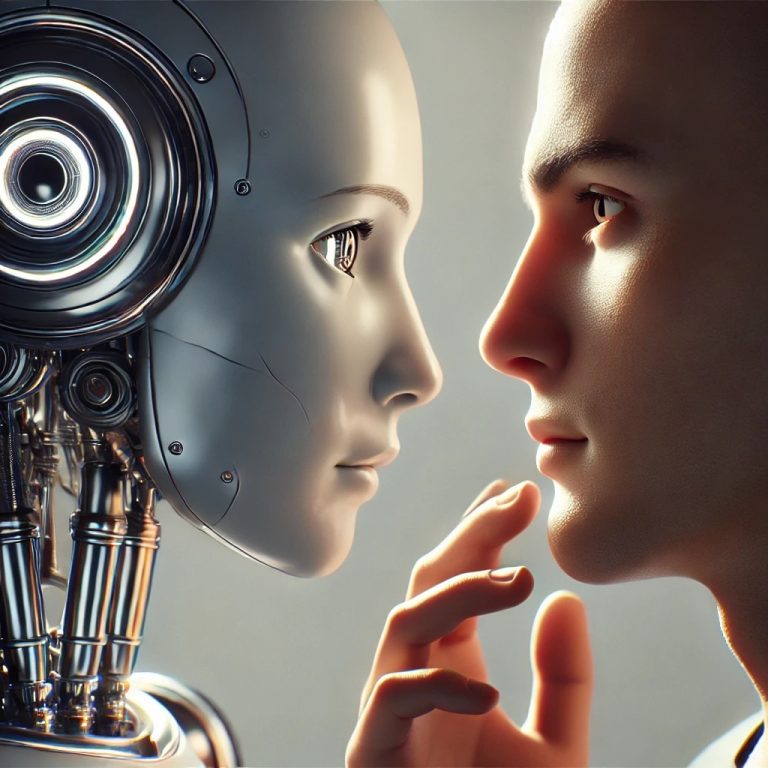Humanoid robot:new aspect for better interaction and efficient design
- ahatia0503
- October 29, 2024
- 9:25 am
- No Comments

Many industrial robotics companies refer to their robots as humanoids, but significant challenges remain in replicating true human capabilities. One of the most critical limitations lies in the lack of sophisticated sensors and neural systems that can mimic even 5% of the human nervous system’s complexity. Achieving such sensor integration and responsiveness presents a formidable challenge.
While aspects like eye contact, gestures, and facial expressions can be improved through deep learning and signal processing, more advanced capabilities require deeper integration of signals from various sensors across the robot’s body. These signals must be collected, processed, and interpreted in real-time to enable fluid, human-like behavior.
A truly advanced humanoid robot would require a network of sensors and actuators functioning together like a biological nervous system, with sensors monitoring parameters such as temperature, pressure, motion, and proximity. Centralized processing—akin to the human central nervous system (CNS)—would be needed to fuse data from these sensors, enabling precise, coordinated movements and adaptive responses to the environment.
while progress is being made with gesture recognition, eye-tracking, and other behavioral aspects, replicating the sensory and neural sophistication of the human body will require advances in sensor technology, artificial neural networks, and real-time signal processing frameworks.
"Anil Seth, a professor of neuroscience at the University of Sussex, is more sympathetic to the hardware-based theories, for one main reason: he thinks biology matters. Every conscious creature that we know of breaks down organic molecules for energy, works to maintain a stable internal environment, and processes information through networks of neurons via a combination of chemical and electrical signals. If that’s true of all conscious creatures, some scientists argue, it’s not a stretch to suspect that any one of those traits, or perhaps even all of them, might be necessary for consciousness."
The previous quotation from Anil Seth, professor of cognitive and computational neuroscience, presents a profound philosophical insight. The task of replicating the intricacies of human perception and consciousness in robotics is both immersive and immensely challenging.
The human nervous system is a complex interplay of chemical and electrical signals transmitted through vast networks of interconnected neurons. These processes form the foundation of modern neuroscience, with well-established scientific communities supporting the underlying theories. Simulating such a sophisticated system in robotics requires not only advanced sensors but also gesture recognition and emotional intelligence frameworks.
By leveraging deep learning neural networks trained on millions of gestures and emotional responses, future robots could potentially interpret emotions with unprecedented precision. This fusion of advanced sensors and emotional intelligence, processed through AI models, opens the door to developing highly conscious robots.
Such robots, with the ability to understand and express emotions, could potentially surpass humans in emotional intelligence. This advancement would mark a profound shift, where machines might not only respond to human emotions but also exhibit self-awareness and empathy, fundamentally changing how we interact with technology.
Sensors
Detect changes and transmit signals for further analysis.
Actuators
Transform energy into motion to perform mechanical tasks.
Neural System
Process signals and control responses in real-time.
Signal Processing
Analyze and transform sensory data into useful outputs.
Emotional Intelligence
Analyze emotions using AI-driven EEG-based algorithms.
Control Centers
Manage data centrally using cloud systems for optimization.
The first video demonstrated a simple eye-tracking mechanism, built using basic code to detect human motion. While functional, more sophisticated implementations, leveraging deep learning algorithms trained on millions of instances of human eye contact and gestures, could significantly enhance a humanoid robot’s ability to replicate natural eye contact and gestures.
The second video explores imitation learning, where the robot learns by observing and mimicking human actions. Although the motion demonstrated in this example is relatively slow compared to Tesla’s Optimus Gen2, the approach highlights the potential of using human motion frequency patterns to optimize the robot’s performance. By encoding these patterns, the robot can recreate movements from past experiences upon request, effectively “recalling” behaviors in real-time.
This process showcases how training on vast datasets of human gestures and eye contact interactions allows robots to improve their responsiveness and emotional engagement. With time, such advancements could lead to humanoid robots capable of fluid, lifelike interaction, making them more effective in service roles, therapy, and other human-facing applications.